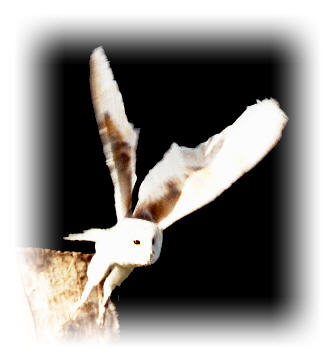Adaptions- Wings
Compared to most other birds barn owls have wings with a surface area that is extremely large relative to their body weight. These long, large wings are also broad and rounded and the combination of these features allow them to fly at relatively low speeds with apparantly little effort.

The wings of the barn owl have another very important adaption – the leading edge and the outer part of the trailing edge of thier flight feathers have stiffened barbs and the upper surfaces are downy – these special feathers provide silent flight. Silent flight is important for two reasons, firstly their prey cannot hear the barn owl approaching and secondly, the barn owl’s sensitive hearing is not compromised by unwanted wing noise.

Latest Comments